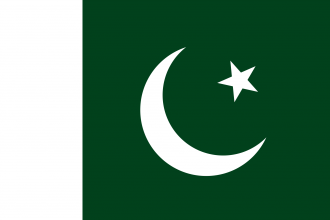Pakistan is situated in Central-South Asia and borders with Afghanistan to the north-west, Iran to the west, the People's Republic of China to the north and India to the east. Islamabad is the capital city of Pakistan.
According to data provided by the International Monetary Fund (IMF) for 2015, the economy of Pakistan is the 25th largest in the world in terms of purchasing power parity (PPP) and the 42nd largest in terms of nominal Gross Domestic Product (GDP). Furthermore it is important to note that one of the country’s most important economic ‘particularities’, is the undocumented economy, which according to Bloomberg was estimated to be some 36% of its GDP (in 2012), shadowing the real strength of the Pakistani economy.
Another important socioeconomic aspect of the country, is the inflow of remittances from foreign workers. This is highlighted by the fact that the State Bank of Pakistan, the Ministry of Overseas Pakistanis and the Ministry of Finance, launched a joint initiative, called Pakistan Remittance Initiative (PRI). This initiative facilitates the inflow of remittances and investments within the country by Pakistanis living abroad. Characteristically, such remittances reached some $ 15.8 billion US dollars in the Financial Year (FY) 2014, recording a sharp increase compared since FY 2001, when remittances accounted for a mere 1.1 billion US dollars.
Historically, the country has experienced several decades of internal political disputes, macroeconomic instability, a fast-growing population and mixed levels of foreign investment that created a vicious circle of slow growth and underdevelopment. Currently Pakistan’s economic environment faces several challenges, such as the war against terrorism, energy shortages and last but not least, natural disasters. One such hit the country in September 2014, damaging part of the sugar, rice and cotton agricultural production.
Pakistan is involved in a long-lasting dispute with India, over the Kashmir region. Born from the partition of India in 1947, the Kashmir conflict gave rise to three wars, in 1947-48, 1965 and in 1971 and in several other skirmishes. In 2013, India controlled 43% of the region (the biggest part of Jammu, the Kashmir Valley, Ladakh and the Siachen Glacier). On the other hand, Pakistan controlled 37% of Kashmir (Azad Kashmir and the northern areas of Gilgit and Baltistan). China administers the remaining 20% of the region, including the Shaksam Valley, which China claims, is part of Tibet.

